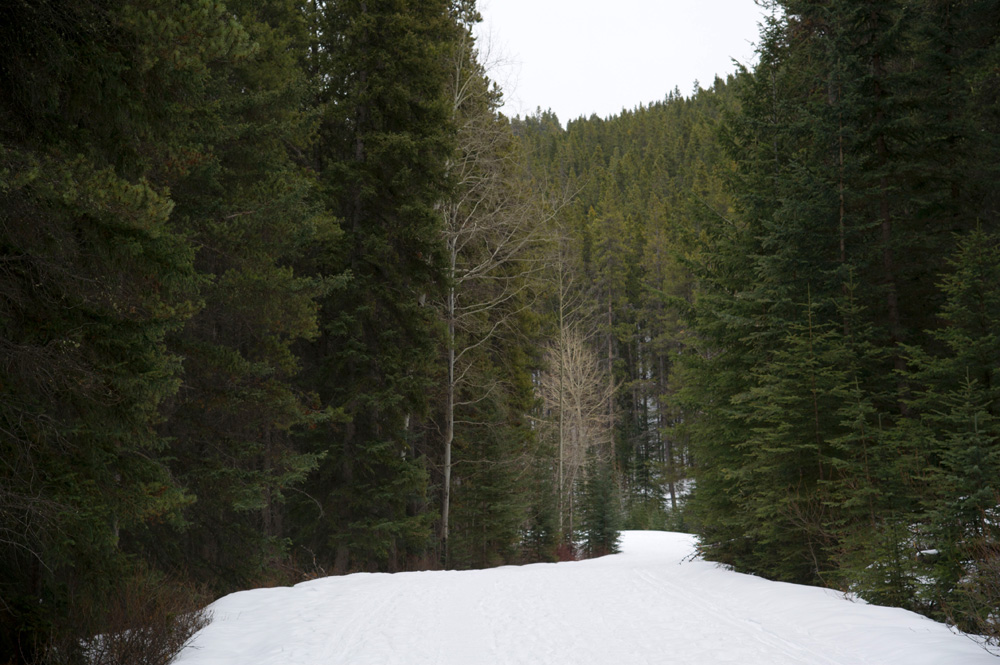Passage investigates landscape as a single line walked between two
undisclosed sites in Alberta’s boreal forest. A path is a network
carved out of the earth by people. These routes of travel form
connections between places, but they also point toward layers of
history and time. Traversals across landscapes mark points of
orientation, decisions made at critical moments along a journey, and
embody the implications of choices made and enacted. A path is not
just a line drawn across the surface of the ground, it is also a
cultural expression.
A single set of footsteps in the audio piece begin slowly and build to include several people walking heavily through the forest clearing depicted in the image. The weighted steps of the undisclosed figures grind the earth beneath their feet, and sink into the snow. Progressively, the narrative of footsteps grows until many people walk together. This culmination suggests both a harmony of effort and dissonant movement through this space.
The footsteps in the piece embody the route of travel several hundred internees walked each day during Canada’s first internment operations in 1915. A relatively unknown part of Canada’s history, several thousand Astro-Hungarian and Ukrainian-Canadian citizens were interned across the nation as a response to cold war fear of otherness—a lesson for contemporary time. In Banff, Alberta, these new and generational citizens walked from an enclosed work camp in the mountains down this path to build a network of roads and passageways through the forest. This network of roadways laid the foundation for Canada's National Park system. Today, this path is part of a ski trail in Banff National Park.
A single set of footsteps in the audio piece begin slowly and build to include several people walking heavily through the forest clearing depicted in the image. The weighted steps of the undisclosed figures grind the earth beneath their feet, and sink into the snow. Progressively, the narrative of footsteps grows until many people walk together. This culmination suggests both a harmony of effort and dissonant movement through this space.
The footsteps in the piece embody the route of travel several hundred internees walked each day during Canada’s first internment operations in 1915. A relatively unknown part of Canada’s history, several thousand Astro-Hungarian and Ukrainian-Canadian citizens were interned across the nation as a response to cold war fear of otherness—a lesson for contemporary time. In Banff, Alberta, these new and generational citizens walked from an enclosed work camp in the mountains down this path to build a network of roads and passageways through the forest. This network of roadways laid the foundation for Canada's National Park system. Today, this path is part of a ski trail in Banff National Park.
